Education |
|
Obrazovanje |
Hyphenation - part 1 of 3

|
|
Odvajanje crticom - dio 1 od 3

|
Hyphenation - part 2 of 3

|
|
Odvajanje crticom - dio 2 od 3

|
Hyphenation - part 3 of 3

|
|
Odvajanje crticom - dio 3 od 3

|
Numbers - part 1 of 3

|
|
Brojevi - dio 1 od 3

|
Numbers - part 2 of 3

|
|
Brojevi - dio 2 od 3

|
Numbers - part 3 of 3

|
|
Brojevi - dio 3 od 3

|
Dates and measurements

|
|
Datumi i mjerne jedinice

|
Acronyms and abbreviations

|
|
Akronimi i kratice

|
|
|
|
|

Hyphenation - part 1 of 3
Hyphenation in individual words
A hyphen shows that parts of a word, or two or more words, belong together.
Hyphenation has an important function, as a hyphen in the right place will prevent misunderstandings.
Consider a "light-blue compound" meaning a "pale blue compound", not one that is "lightweight and blue".
Similarly, a "high-voltage cable" means "a cable that has a high voltage", not one that is "high up".
In AE (American English), words which are hyphenated in BE (British English) are often written as a single word, but modern BE is changing accordingly.
For example, "co-operate" and "co-ordinate" in BE have been replaced by "cooperate" and "coordinate".
Not all "co-" words follow this pattern and both BE and AE have a hyphen in "co-opt" (elect) as in "they co-opted a woman to the committee".
In BE, most words with "non-" and "semi-" prefixes have hyphens, hence in AE it is "nonlinear" and in BE it is "non-linear".
Nevertheless, the "uni-" prefixes are usually written in one word in BE.
In general, as words become more familiar, hyphens tend to be dropped...

|
|

Odvajanje crticom - dio 1 od 3
Odvajanje pojedinačnih riječi crticom
Crtica pokazuje da dijelovi riječi, odnosno dvije ili više riječi, pripadaju zajedno.
Odvajanje crticom ima važnu ulogu, jer će crtica na pravom mjestu spriječiti nesporazume.
Razmotrite "light-blue compound" što znači "svijetloplavi spoj", a ne spoj koji je "lagan i plav".
Slično tome, "high-voltage cable" znači "kabel koji je pod visokim naponom", a ne onaj koji je "visoko".
U AE (američkom engleskom), riječi koje se odvajaju crticom u BE (britanskom engleskom) često se pišu kao jedna riječ, ali se moderan BE mijenja u skladu s tim.
Na primjer, "co-operate" (surađivati) i "co-ordinate" (uskladiti) u BE su zamijenjeni izrazima "cooperate" i "coordinate".
Ovaj uzorak ne slijede sve riječi koje počinju na "co-", pa i BE i AE imaju crticu u "co-opt" (izabrati) kao u "they co-opted a woman to the committee" (oni su izabrali ženu u odbor).
U BE, većina riječi s prefiksima "non-" i "semi-" ima crtice, stoga se u AE piše "nonlinear" a u BE "non-linear".
Pa ipak, u BE se prefiksi "uni-" obično pišu kao jedna riječ.
Općenito, kako riječi postaju poznatije, crtice se sve više odbacuju...

|
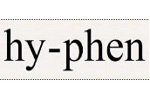
Hyphenation - part 2 of 3
Initial adjective phrases
A hyphen in the correct place can prevent ambiguity.
Consider the difference between: "real time measurements" (real ones) / "real-time measurements" (registered simultaneously), "more important people" (more VIPs) / "more-important people" (people with higher status), "a third world war" (all the world at war) / "a third-world war" (only the third world at war), and "fifty odd students" (50 strange students) / "fifty-odd students" (just over 50 students).
Note that if compounds like "state of the art" and "cost effective" are placed after the verb, they become noun phrases and have no hyphens: "these solutions are state of the art", "these methods are cost effective".
If an "-ly" adverb is in this initial position, there is no hyphen: "environmentally friendly solutions", "extremely fast driving".
However, with other adverbs, the hyphen is used: "close-cropped hair", "well-dressed woman"...

|
|

Odvajanje crticom - dio 2 od 3
Početne pridjevske fraze
Crtica na pravom mjestu može spriječiti dvosmislenost.
Razmotrite razlike između: "real time measurement" (stvarno mjerenje vremena) / "real-time measurement" (mjerenje u stvarnom vremenu), "more important people" (više važnih osoba) / "more-important people" (osobe s višim statusom), "a third world war" (treći svjetski rat) / "a third-world war" (rat u trećem svijetu), i "fifty odd students" (50 čudnih studenata) / "fifty-odd students" (nešto više od 50 studenata).
Imajte na umu da složenice poput "state of the art" (najmodernije) i "cost effective" (isplativo) postaju imeničke fraze i nemaju crtice ako se stavljaju nakon glagola: "these solutions are state of the art" (ova su rješenja najmodernija), "these methods are cost effective" (ove su metode isplative).
Ako je na početku prilog koji završava na "-ly", crtica se ne koristi: "environmentally friendly solutions" (ekološki prihvatljiva rješenja), "extremely fast driving" (izuzetno brza vožnja).
Međutim, kod drugih se priloga crtica koristi: "close-cropped hair" (kratko podšišana kosa), "well-dressed woman" (dobro odjevena žena)...

|
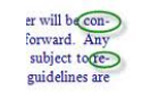
Hyphenation - part 3 of 3
It is normal to put a hyphen after an initial single letter, particularly a capital: "T-shirt", "U-turn", "V-sign", "X-ray".
Use hyphens to create compounds in which an awkward combination of consonants would be formed by joining the words, particularly if there are two similar consonants: "animal-like", "bell-like", "water-repellent".
Hyphenated compounds should be coordinated as follows: "gamma- and beta-emitters", "acid- and heat-resistant".
When compounds are not hyphenated they should not be coordinated but written out in full: "prenatal and postnatal effects", "pre- and post-natal effects".
Closed compounds in technical texts
There are two categories.
The first consists of pairs of short native English words: "sugarbeet", "groundwater", etc...

|
|

Odvajanje crticom - dio 3 od 3
Uobičajeno je staviti crticu nakon početnog samostalnog slova, osobito kada je ono veliko: "T-shirt" (majica s kratkim rukavima), "U-turn" (zavoj u obliku slova U), "V-sign" (znak u obliku slova V), "X-ray" (rendgenska zraka).
Koristite crtice za tvorbu složenica u kojima bi se zbog spajanja riječi pojavila nezgodna kombinacija suglasnika, osobito ako su u pitanju dva slična suglasnika: "animal-like" (nalik na životinju), "bell-like" (nalik na zvono), "water-repellent" (polunepromočiv).
Složenice odvojene crticama potrebno je uskladiti na sljedeći način: "gamma- and beta-emitters" (gama i beta emiteri), "acid- and heat-resistant" (otporan na kiselinu i visoku temperaturu).
Kada se složenice ne odvajaju crticama nije ih potrebno uskladiti, već napisati u cijelosti: "prenatal and postnatal effects" (prenatalni i postnatalni učinci), "pre- and post-natal effects" (pre i postnatalni učinci).
Zatvorene složenice u tehničkim tekstovima
Postoje dvije kategorije.
Prva se sastoji od parova kratkih izvornih engleskih riječi: "sugarbeet" (šećerna repa), "groundwater" (podzemne vode) itd...

|
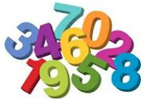
Numbers - part 1 of 3
Digits
"20/20" - means perfect eyesight without glasses or contact lenses: "The doctor said I still had 20/20 vision".
"24/7" - means 24 hours and 7 days a week: "That 24/7 shop might have some paper".
"4x4" - means a vehicle with four-wheel drive.
This is read as "four by four": "Even our car managed in the snow and it's no 4x4".
"2.2" - is a decimal and is read as "two point two".
Digits are used in various ways for expressing time, dates, and telephone numbers.
Ordinal and cardinal numbers
Ordinal numbers mean "1st, 2nd, 3rd" etc., or "first, second, third, fourth".
These are used either to indicate rank: "He is second in command at the moment", or the order of events: "The team managed to equalize in the 49th minute"...

|
|

Brojevi - dio 1 od 3
Brojčane znamenke
"20/20" - znači savršen vid bez naočala ili kontaktnih leća: "The doctor said I still had 20/20 vision" (liječnik mi je rekao da još uvijek imam savršen vid).
"24/7" - znači 24 sata dnevno, 7 dana u tjednu: "That 24/7 shop might have some paper" (ona trgovina koja radi cijeli dan mogla bi imati nešto papira).
"4x4" - znači vozilo s pogonom na sva četiri kotača.
Ovo se čita kao "four by four" (četiri puta četiri): "Even our car managed in the snow and it's no 4x4" (čak se i naš automobil snašao na snijegu, a nije 4x4).
"2.2" - je decimala i čita se kao "two point two" (dva točka dva).
Brojčane znamenke koriste se na različite načine za izražavanje vremena, datuma i telefonskih brojeva.
Redni i kardinalni brojevi
Redni brojevi su "1st, 2nd, 3rd" (1., 2., 3.) itd., odnosno "first, second, third, fourth" (prvi, drugi, treći, četvrti).
Oni se koriste za označavanje ranga: "He is second in command at the moment" (on je drugi u zapovjednom lancu u ovom trenutku), odnosno redoslijeda događaja: "The team managed to equalize in the 49th minute" (tim je uspio izjednačiti u 49. minuti)...

|
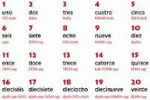
Numbers - part 2 of 3
Numbers in numerals or words
It is normal to write numbers as Arabic numerals in scientific and technical contexts.
Otherwise, a general rule is to write numbers below 10 as words and larger numbers as numerals.
Avoid mixing numerals and words in the same range: "The boys were from 7 to 15" (not "from seven to 15").
Large numbers are written as words at the beginning of a sentence: "Seventy-two thousand people died in the war".
Beginning a sentence with "72 000 people" is generally considered poor written style.
It can either be rephrased by adding "A total of" or by changing the syntax: "The war claimed 72 000 lives".
ISO standard 31-0 (1992), recommends using a space as the thousand/million/billion marker in numbers in English: "35 500" and "45 500".
This standard is also followed by some standardization bodies at national level...

|
|

Brojevi - dio 2 od 3
Brojevi kao znamenke ili riječi
U znanstvenim je i tehničkim kontekstima uobičajeno pisati brojeve kao arapske brojeve.
U suprotnom, opće je pravilo pisati brojeve manje od 10 kao riječi, a veće brojeve znamenkama.
Izbjegavajte miješanje znamenaka i riječi u istom rasponu: "The boys were from 7 to 15" ("dječaci su imali od 7 do 15 godina" - a ne "od sedam do 15 godina").
Veliki se brojevi na početku rečenice pišu kao riječi: "Seventy-two thousand people died in the war" (sedamdeset i dvije tisuće ljudi poginulo je u ratu).
Počinjanje rečenice s "72 000 ljudi" općenito se smatra lošim stilom pisanja.
To se može preformulirati dodavanjem fraze "A total of" (ukupno) ili promjenom sintakse: "The war claimed 72 000 lives" (rat je uzeo 72 000 života).
ISO standard 31-0 (1992), preporučuje uporabu razmaka za razdvajanje tisuća, milijuna i milijardi kod brojeva na engleskom jeziku: "35 500" i "45 500".
Ovog se standarda također pridržavaju i neka tijela za standardizaciju na nacionalnoj razini...

|

Numbers - part 3 of 3
Telephone numbers
According to international standards, telephone numbers should be written in pairs, without hyphens between digits: "+33 1 46 5711 00", "+3216 23 90 96".
The + sign means the international code, which is usually 00 today.
A common format for writing mobile telephone numbers is: "+46 721 23 500".
In Britain and the USA, telephone numbers are usually divided into two or three parts, the first is the area code (e.g. 01865), and the second is the local number, which may be six, seven, or eight digits...

|
|

Brojevi - dio 3 od 3
Telefonski brojevi
Prema međunarodnim standardima, telefonske je brojeve potrebno pisati u parovima, bez crtica između znamenki: "+33 1 46 5711 00", "+3216 23 90 96".
Znak + označava međunarodni kod, koji je danas obično 00.
Uobičajen format za pisanje mobilnih telefonskih brojeva je: "+46 721 23 500".
U Velikoj Britaniji i SAD-u, telefonski se brojevi obično dijele na dva ili tri dijela, prvi dio je pozivni broj (npr. 01865), a drugi dio je lokalni broj, koji se može sastojati od šest, sedam ili osam znamenki...

|
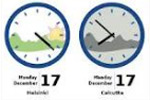
Dates and measurements
Digital dates
Many companies have their standard letter/fax/report title page set up so that they automatically generate dates in digital form according to the ISO 8601 standard (ccyy-mm-dd or 2006-05-11) in the date space on the first page and on following pages.
Unfortunately, many report-writers do not follow this standard and use "11/05/06" elsewhere in letters and reports.
This can lead to big misunderstandings.
As Americans place the month before the day, "11/05/06" means either "11 May 2006" or "November 5, 2006" according to which side of the Atlantic the readers are on.
One solution is to follow the ISO 8601 standard and systematically use the model "ccyy-mm-dd" or 2006-04-12 (i.e. "12 April 2006").
It is stipulated in this standard that four digits should be used for years (i.e. "2006-04-12") and that hyphens, not dots or slashes, should be used to separate the units.
If you have to give a time interval, an "em dash" can be used (i.e. "2002-06-01 - 2004-05-31").
ISO 8601 only specifies digital notations and does not cover dates where words are used in the representation...

|
|

Datumi i mjerne jedinice
Datumi u digitalnom obliku
Mnoge tvrtke imaju namještenu naslovnu stranicu svojeg standardnog pisma / faksa / izvješća na način da ona automatski generira datume u digitalnom obliku u skladu s ISO 8601 standardom (ccyy-mm-dd - godina-mjesec-dan - odnosno 2006/05/11) u prostoru predviđenom za datum na prvoj stranici i na sljedećim stranicama.
Nažalost, mnogi se pisci izvješća ne pridržavaju ovog standarda i koriste "11/05/06" na drugim mjestima u pismima i izvješćima.
To može dovesti do velikih nesporazuma.
S obzirom da Amerikanci pišu mjesec prije dana, "11/05/06" može značiti "11. svibnja 2006. godine" ili "5. studenog 2006. godine", ovisno o tome s koje se strane Atlantika čitatelji nalaze.
Jedno je rješenje pridržavati se ISO 8601 standarda i sustavno koristiti model "ccyy-mm-dd" (godina-mjesec-dan) odnosno 2006/04/12 (tj. "12. travnja 2006. godine").
U ovom je standardu propisano da se za godinu koriste četiri znamenke (tj. "2006-04-12") te da je za odvajanje cjelina potrebno koristiti crtice, a ne točke ili kose crte.
Ako morate dati vremenski interval, možete koristiti "em crticu" (npr. "2002-06-01 - 2004-05-31").
ISO 8601 definira samo digitalne načine zapisa i ne pokriva datume kod kojih se za prezentaciju koriste riječi...

|

Acronyms and abbreviations
An acronym is a word formed from the initial letters of other words and is pronounced as a word, such as "AIDS" and "NATO".
An abbreviation may be formed from the initial letters in a phrase or name and is read letter-by-letter, like ASAP for "as soon as possible" in BE.
Note that it is normal to write the term in full the first time it is mentioned followed by the acronym or abbreviation in brackets.
Then just the abbreviation can be used.
This is called Finite Element Modelling (FEM).
An acronym is written without stops and read as a word.
Some of these words are used so much that it is often difficult to remember that they are acronyms.
Examples are "Aids", also written "AIDS" and "PIN".
This often leads to the mistake of writing "PIN number" or "AIDS syndrome".
Most acronyms are written in capital letters, but a few are in lower case and are scarcely recognizable as acronyms as they are treated as everyday words.
Examples of these are "laser" and "radar"...

|
|

Akronimi i kratice
Akronim je riječ koja se tvori od početnih slova drugih riječi, a izgovara se kao riječ, poput "AIDS" i "NATO".
Kratica se može tvoriti od početnih slova u izrazu ili nazivu i čita se slovo po slovo, poput kratice ASAP ("as soon as possible" - što je prije moguće), u BE.
Imajte na umu da je uobičajeno pisati pojam u cijelosti kada ga se prvi put spominje, a nakon njega slijedi akronim ili kratica u zagradi.
Nakon toga je moguće koristiti isključivo kraticu.
Ovo se zove "Finite Element Modelling - FEM" (modeliranje konačnih elemenata).
Akronim se piše bez točaka i čita se kao riječ.
Neke se od tih riječi koriste u tolikoj mjeri da je često teško upamtiti da se radi o akronimima.
Primjeri su "Aids", koji se također piše "AIDS" i "PIN".
To često dovodi do pogrešaka kod pisanja kao što su "PIN number" (PIN broj) ili "AIDS syndrome" (AIDS sindrom).
Većina se akronima piše velikim slovima, ali se neki od njih pišu malim slovima i teško ih je prepoznati kao kratice jer ih se smatra svakodnevnim riječima.
Primjeri su "laser" i "radar"...

|
|
|



